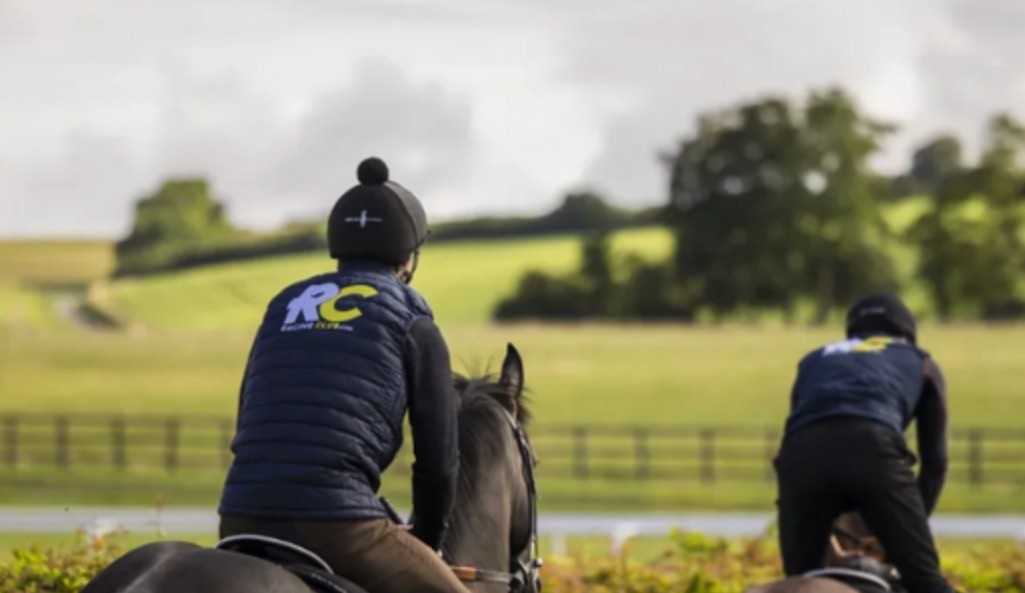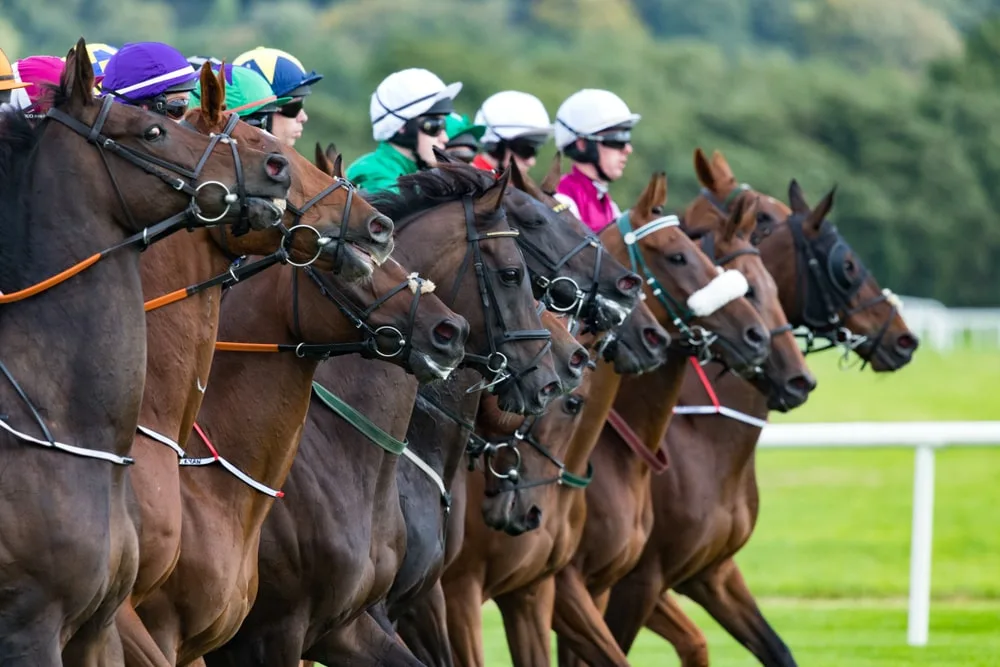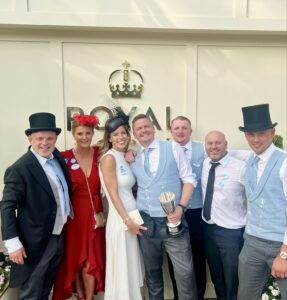The very words; horse racing, conjure up all sorts of sentiment and excitement, from the dressing up, travelling to the race course, and, of course, getting into the racing stadium and viewing the parade ring with those beautiful, highly trained horses, once more also experiencing the winning enclosure with the jockeys, trainers and owners celebrating a magnificent win.
Going to the races provides the most exciting adrenalin rush, and having that experience with friends and family. With most racecourses not insisting on a specific dress code, the day is much more relaxing and thrilling to watch. However, tradition says that many racegoers love dressing up wearing their favourite hat or sharp new suit to make the most of an exciting day. Children are also welcome at the racecourse; in most cases, they can go free; this is a fabulous day out that all the family can enjoy. Racecourses are afoot, with restaurants, bars, and tearooms, making it a wonderful place to socialise with friends and family and enjoy the day out between the race card.
The Types of Horse Racing
In the racing world, there are two types of horse racing: flat racing and jump racing. In this article, we will discuss the two types of horse racing.
Flat Racing
As you would expect from the name, many varied flat races run on a flat track and can vary in distance from 4 furlongs (800 yards) to two miles. It is generally considered that this type of racing is the more elite. Flat races over a shorter distance are called sprints. Those over longer distances are called stayers, and those in between are called middle-distance. A point to note: all five classic British races (including the St Ledger) are over middle distances.
Another essential factor in flat horse racing is the track; some tracks are run on the sand, and others are on more advanced properties. Factors to note are the ground: is it fast, standard or slow? Other factors include left and right-hand turnings, which make a massive difference to the horse. Remember, even horses have preferences for the ground, even if the course is flat or stiff.
Jump Racing
Jump races include obstacles for the horse and jockey to jump. Small ones are commonly known as hurdles; the more significant large type is fences. Jump Racing’s official name is National Hunt Racing. Jump racing is held over various distances from 2 to 4.5 miles. Some races may be limited to amateur or less experienced jockeys, known as conditionals. Examples of races include Bumpers, Hurdle races, Steeplechases and Handicaps. In the United Kingdom alone, there are over 40 race courses; the main events throughout the year of jump racing include the Cheltenham Festival held in March and the Grand National Festival in April.
The major horse racing events and venues
Ascot
Ascot Racecourse is located on Ascot Heath, Windsor, Maidenhead; the Royal Ascot meeting was originally (initiated in 1711 by Queen Ann). The British Monache attends the last four days each June. It is traditionally recognised as a significant social fashion event. The Blue Ribbon event is the Ascot Gold Cup, established in 1807 and run over 2.5 miles by horses over three years old.
Epsom
Epsom Downs is synonymous with horse racing and is steeped in racing history. It is a grade 1 racecourse on the hills associated with Epsom in Surrey, England, used for thoroughbred horse racing. The location was given a thumbs up to train in the 1640s, and it was at Epsom Downs in 1769, that the great Eclipse was trained and won its first race. The 2023 Epsom Derby was the 244th annual running of the Derby horse race, which took place at Epsom Downs Racecourse on the 3rd of June, 2023.
Cheltenham
Cheltenham Racecourse is a 5-minute drive from Cheltenham Town Centre on Evesham Road. Racing at Cheltenham goes back over two hundred years. One of the first official horse racing events was, in fact, a flat race which took place in 1815 on Nottingham Hill. Cheltenham is famous for its racecourse and holds the Cheltenham Festival and Gold Cup in March. This invariably sees the town packed solid with racegoers, known as the festival town celebrating music and the arts.
Aintree
Aintree Racecourse was established in 1829 and was the only flat racing venue at the time. The first jump races weren’t until 1836, with the Grand National taking place three years later. The winner was a horse called Lottery, with 50,000 spectators enjoying the experience. The Grand National horse race is held annually at Aintree Racecourse; the National is run over two circuits of a triangular course; it’s famous for its vast fences, namely the Chair and Becher’s Brook, to name a few. The festival meeting also features other top races only the top thoroughbreds can run.
Racing Jargon
In this next section, we will be breaking down some of the most commonly used horse racing phrases that you may not have heard of. Horse racing is full of weird and wonderful words that, to someone who has not heard them before, can sound very strange. We are here to help you understand these words and phrases to help you be fluent in horse racing jargon!
Furlong
It is said that the word furlong combines two old English words: Furh, which is short for furrow, and Lang, which means long. In essence, the furrow is the distance that a horse could plough in one day, which in distant terms equates to 200 yards. Over time, the word furlong altered slightly from showing a distance a horse could plough to representing horse racing distances.
Length
A length is a measurement of elapsed time from the point where the horse crosses the finishing line to the second horse. However, every horse is different in size and length, and the stride pattern can also make a difference, but in general terms, a distance can be measured at about 8-9 feet.
Jockey
A Jockey is an individual who rides thoroughbred horses in professional horse racing; there can be male or female jockeys.
Mare
A mare is a mature female horse. A mare is a three-year-old female horse in the majority of horse racing situations. But a mare is any female horse older than four years old in thoroughbred horse racing.
Stallion
A stallion is a male horse that has not been castrated. In most cases, they are kept segregated from other horses; they have a reputation for being strong-willed and feisty. Stallions are used for breeding and looking good; due to their stunning elegance and power, they are often seen competing in equestrian disciplines.
Filly
A filly is a female horse under the age of three. Once the filly is over three, it is called a mare. In essence, we are talking about a female foal.
Colt
A young male horse is called a colt. Like fillies, colts can keep this title until they are five.
Classic
A Classic or Classics is the creme de la creme of British horse racing, five races that are, in fact, the ultimate test of a generation of horses. They are limited to three-year-old colts and fillies and run over three distances.
Summary
We have discussed in this article many elements associated with horse racing and covered a small proportion of what the beginner racegoer should know when entering the world as a sport for kings (So it was said). We covered the two types of horse racing, namely flat racing and jump racing, and gave the low down on what novice racegoers should be looking for and having an understanding of. We covered some horseracing jargon that makes it much more precise and defined, especially when you come across this language when you next visit a racecourse.
Any Questions?
If this is new for you or have any questions, we will answer them as soon as possible.
Contact Us





